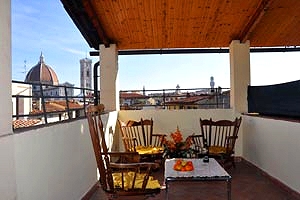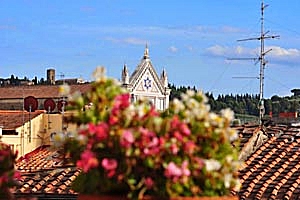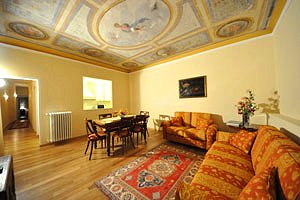The Museum of the History of Science in Florence

Florence - Museum of Science
During the 19th century, even Francesco and Pietro Leopoldo of Lorraine continued this type of collecting with the aid of qualified specialists like the abbot Felice Fontana (1730-1805), who was appointed to irect nd increase the collection of the new Museum of Physics and Natural History, inaugurated in 1775 in the rooms of the present day Specola Museum, situated in Via Romana. Most of the instruments displayed come from the workshop of the latter museum and are now exhibited on the second floor of the Museum of the History of Science, that also comprises the old Medici collection originally displayed at the Uffizi.
The first floor (11 rooms) is dedicated to the Medici core: quadrants, astrolabus, meridianas, dials, compasses, armillary spheres, bussolas, real works of art made by famous Tuscan and European artists. The museum also exhibits Galileo`s original instruments, the thermometers belonging to the Accademia del Cimento (1657-1667), the microscopes and meteorological instruments. The second floor (10 rooms) shows a large number of very interesting and beautiful instruments, mostly belonging to the Lorraine family, used for mechanical, electrostatic and pneumatic applications. Other sections are dedicated to mechanical clocks, sextants, octants, pharmaceutical and chemical apparatus, weights and measures. The section dedicated to medicine displays suggestive obstetrical models in wax and terracotta, which show a real catalogue of anomalous positions of the foetus in the womb, in addition to a collection of surgical instruments belonging to Giovanni Alessandro Brambilla.
The Institute of History of Science, close to the museum, owns a very large and old library with lots of research material that is continuously updated. The Institute publishes an internal review on history of science, "Nuncius", besides carrying out permanent research work on the history of science and technique, organising exhibitions and publishing monographical works, catalogues of instruments, etc. It also carries out an intense didactic activity thanks to the Planetarium on the ground floor. The Institute also has a photographic laboratory, two restoration laboratories and a modern IT laboratory. ... from "Museums and Galleries of Florence and Surroundings" (Apt Florence)
Museo della Scienza ... further information .. Museo della Scienza
Our most requested apartments in the Florence historical centre:
 Holiday apartments in pretty villa on the southern outskirts of Florence, in the vicinity of Piazzale Michelangelo. Accommodation for groups of 4/6/8/10/12 people. Air conditioning, Internet connection. Just a few minutes from Florence historical centre.
More details
Holiday apartments in pretty villa on the southern outskirts of Florence, in the vicinity of Piazzale Michelangelo. Accommodation for groups of 4/6/8/10/12 people. Air conditioning, Internet connection. Just a few minutes from Florence historical centre.
More details
 Beautiful apartment sleeping 6+2 in Florence historic centre, at a stone`s throw from Santa Maria Novella railway station. Air conditioning, Internet connection and panoramic balcony with view over the Duomo and the Medici Chapels.
More details
Beautiful apartment sleeping 6+2 in Florence historic centre, at a stone`s throw from Santa Maria Novella railway station. Air conditioning, Internet connection and panoramic balcony with view over the Duomo and the Medici Chapels.
More details
 Apartment sleeping 2+1 in the heart of Florence historic centre, in the district of Santa Croce. Panoramic balcony with view over the basilica of Santa Croce, air conditioning, Internet connection, close to the most important Florentine monuments.
More details
Apartment sleeping 2+1 in the heart of Florence historic centre, in the district of Santa Croce. Panoramic balcony with view over the basilica of Santa Croce, air conditioning, Internet connection, close to the most important Florentine monuments.
More details
 Apartment in the historical centre of Florence a few steps away from the Accademia Gallery. Nearby Piazza Duomo, Piazza Signoria, the Uffizi Gallery . 5+2 beds, Internet Connection and air conditioning.
More details
Apartment in the historical centre of Florence a few steps away from the Accademia Gallery. Nearby Piazza Duomo, Piazza Signoria, the Uffizi Gallery . 5+2 beds, Internet Connection and air conditioning.
More details







